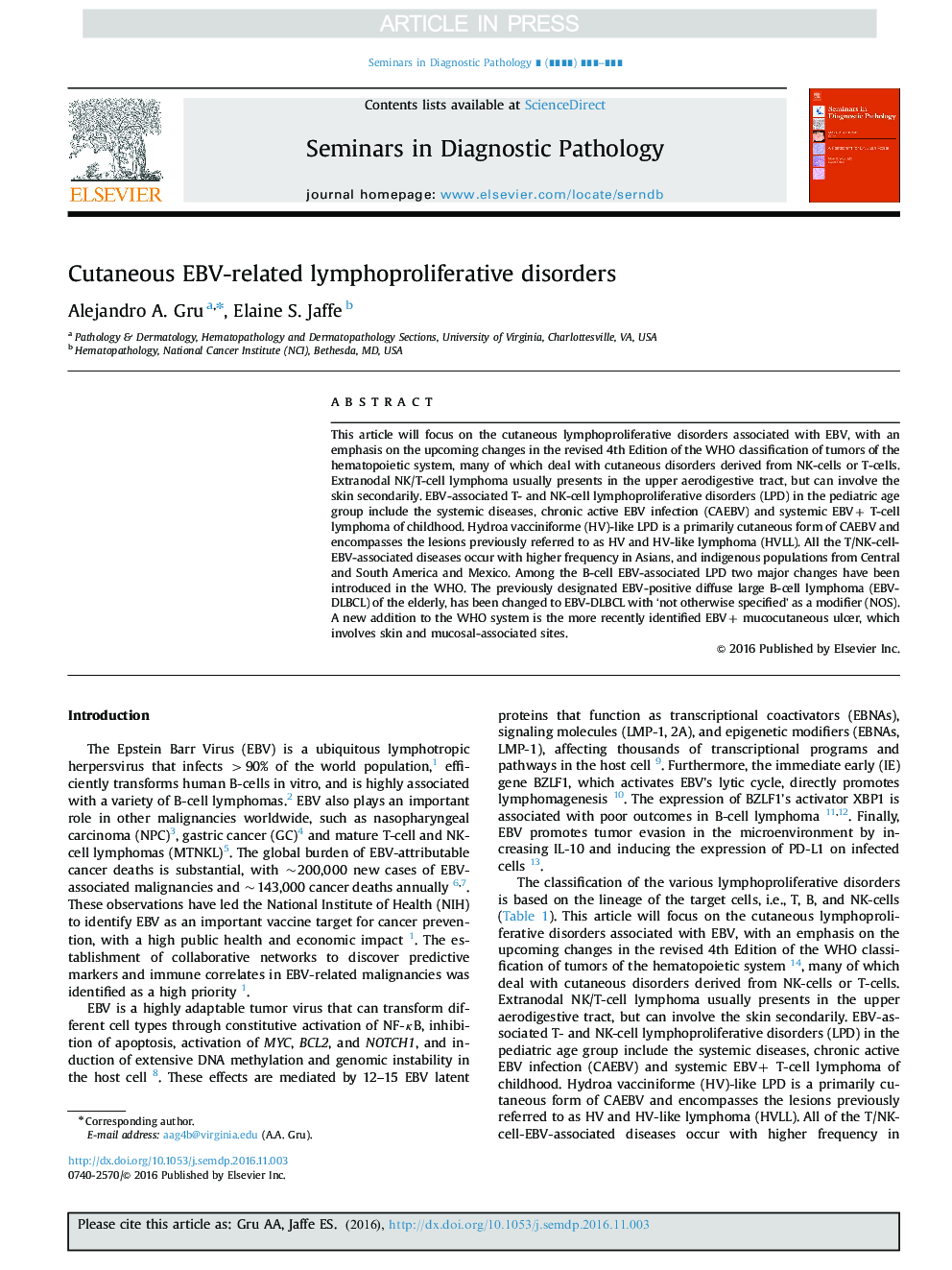| Article ID | Journal | Published Year | Pages | File Type |
|---|---|---|---|---|
| 5716733 | Seminars in Diagnostic Pathology | 2017 | 16 Pages |
Abstract
This article will focus on the cutaneous lymphoproliferative disorders associated with EBV, with an emphasis on the upcoming changes in the revised 4th Edition of the WHO classification of tumors of the hematopoietic system, many of which deal with cutaneous disorders derived from NK-cells or T-cells. Extranodal NK/T-cell lymphoma usually presents in the upper aerodigestive tract, but can involve the skin secondarily. EBV-associated T- and NK-cell lymphoproliferative disorders (LPD) in the pediatric age group include the systemic diseases, chronic active EBV infection (CAEBV) and systemic EBV+ T-cell lymphoma of childhood. Hydroa vacciniforme (HV)-like LPD is a primarily cutaneous form of CAEBV and encompasses the lesions previously referred to as HV and HV-like lymphoma (HVLL). All the T/NK-cell-EBV-associated diseases occur with higher frequency in Asians, and indigenous populations from Central and South America and Mexico. Among the B-cell EBV-associated LPD two major changes have been introduced in the WHO. The previously designated EBV-positive diffuse large B-cell lymphoma (EBV-DLBCL) of the elderly, has been changed to EBV-DLBCL with 'not otherwise specified' as a modifier (NOS). A new addition to the WHO system is the more recently identified EBV+ mucocutaneous ulcer, which involves skin and mucosal-associated sites.
Related Topics
Health Sciences
Medicine and Dentistry
Pathology and Medical Technology
Authors
Alejandro A. Gru, Elaine S. Jaffe,
